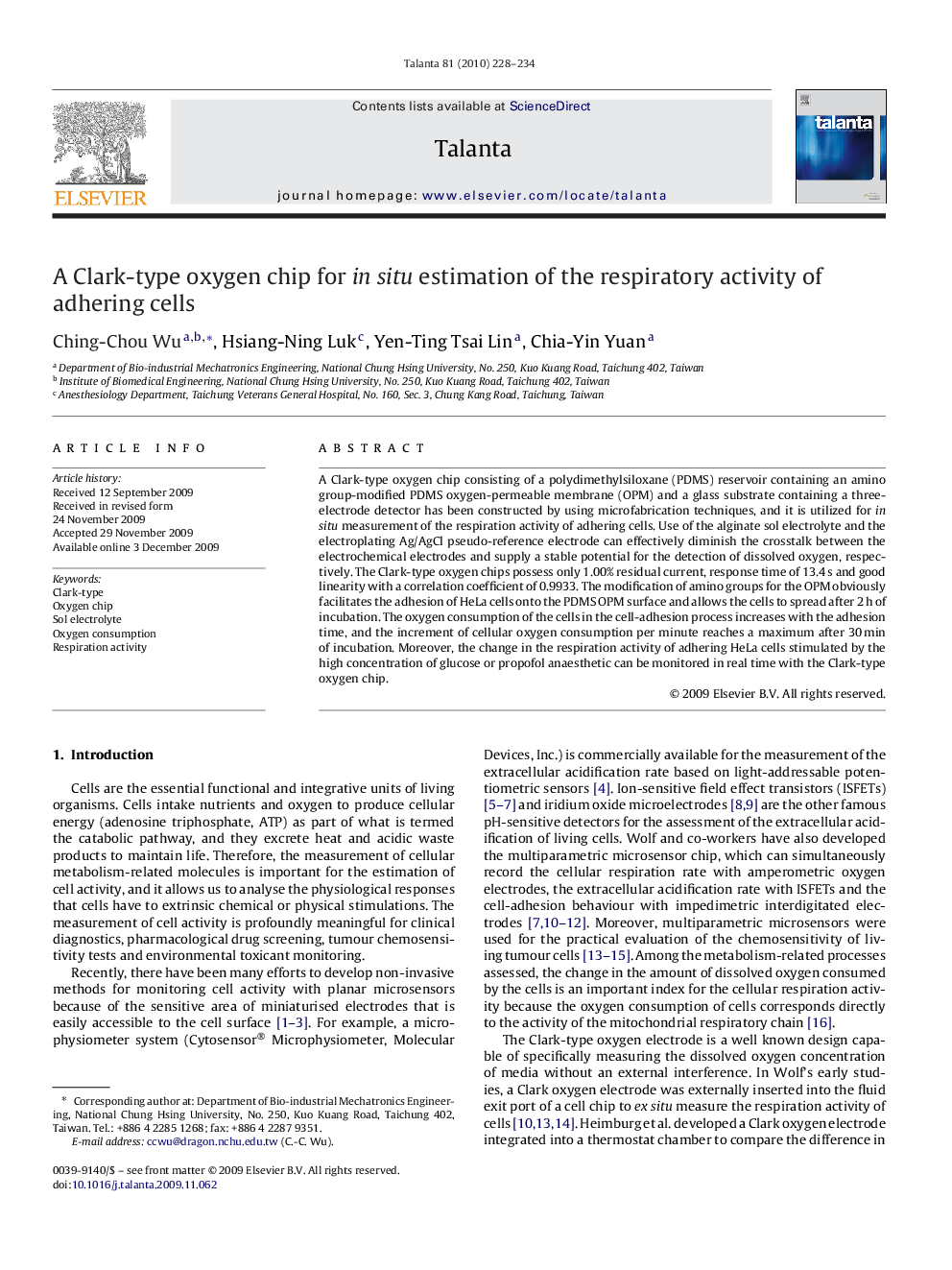| Article ID | Journal | Published Year | Pages | File Type |
|---|---|---|---|---|
| 1246638 | Talanta | 2010 | 7 Pages |
A Clark-type oxygen chip consisting of a polydimethylsiloxane (PDMS) reservoir containing an amino group-modified PDMS oxygen-permeable membrane (OPM) and a glass substrate containing a three-electrode detector has been constructed by using microfabrication techniques, and it is utilized for in situ measurement of the respiration activity of adhering cells. Use of the alginate sol electrolyte and the electroplating Ag/AgCl pseudo-reference electrode can effectively diminish the crosstalk between the electrochemical electrodes and supply a stable potential for the detection of dissolved oxygen, respectively. The Clark-type oxygen chips possess only 1.00% residual current, response time of 13.4 s and good linearity with a correlation coefficient of 0.9933. The modification of amino groups for the OPM obviously facilitates the adhesion of HeLa cells onto the PDMS OPM surface and allows the cells to spread after 2 h of incubation. The oxygen consumption of the cells in the cell-adhesion process increases with the adhesion time, and the increment of cellular oxygen consumption per minute reaches a maximum after 30 min of incubation. Moreover, the change in the respiration activity of adhering HeLa cells stimulated by the high concentration of glucose or propofol anaesthetic can be monitored in real time with the Clark-type oxygen chip.
